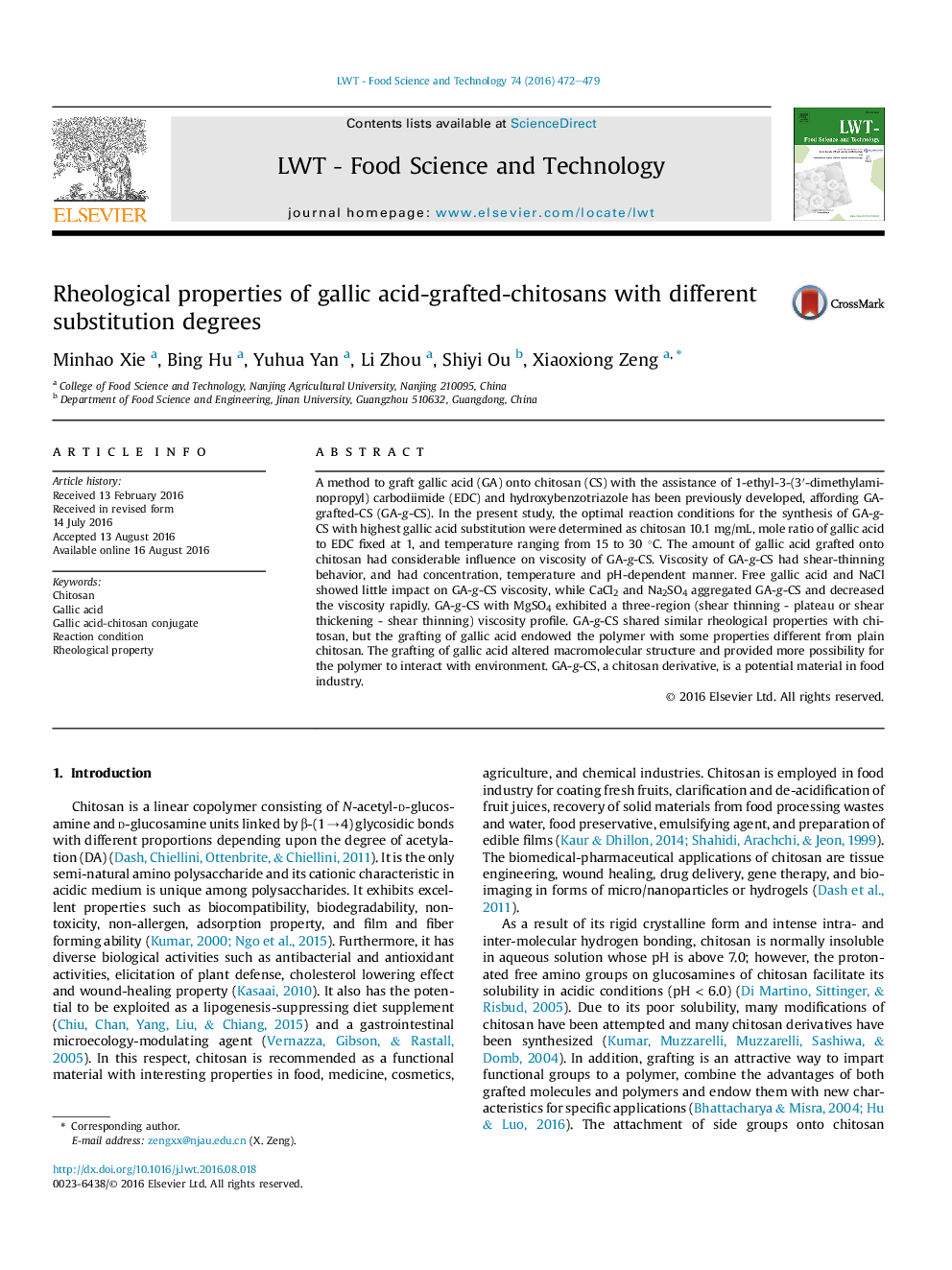| Article ID | Journal | Published Year | Pages | File Type |
|---|---|---|---|---|
| 4563485 | LWT - Food Science and Technology | 2016 | 8 Pages |
•Substitution of gallic acid-grafted-chitosan was controlled by reaction factors.•Viscosity of gallic acid-grafted-chitosan depended on concentration and substitution.•Increased temperature or pH decreased viscosity of gallic acid-grafted-chitosan.•Bivalent ions had considerable impacts on viscosity of gallic acid-grafted-chitosan.
A method to graft gallic acid (GA) onto chitosan (CS) with the assistance of 1-ethyl-3-(3′-dimethylaminopropyl) carbodiimide (EDC) and hydroxybenzotriazole has been previously developed, affording GA-grafted-CS (GA-g-CS). In the present study, the optimal reaction conditions for the synthesis of GA-g-CS with highest gallic acid substitution were determined as chitosan 10.1 mg/mL, mole ratio of gallic acid to EDC fixed at 1, and temperature ranging from 15 to 30 °C. The amount of gallic acid grafted onto chitosan had considerable influence on viscosity of GA-g-CS. Viscosity of GA-g-CS had shear-thinning behavior, and had concentration, temperature and pH-dependent manner. Free gallic acid and NaCl showed little impact on GA-g-CS viscosity, while CaCl2 and Na2SO4 aggregated GA-g-CS and decreased the viscosity rapidly. GA-g-CS with MgSO4 exhibited a three-region (shear thinning - plateau or shear thickening - shear thinning) viscosity profile. GA-g-CS shared similar rheological properties with chitosan, but the grafting of gallic acid endowed the polymer with some properties different from plain chitosan. The grafting of gallic acid altered macromolecular structure and provided more possibility for the polymer to interact with environment. GA-g-CS, a chitosan derivative, is a potential material in food industry.
